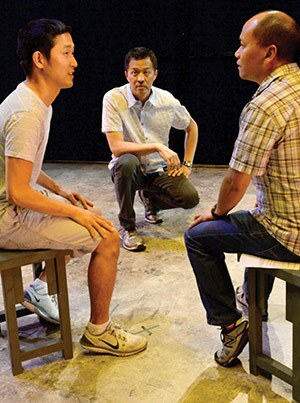Tim Dang: The Arts Can Guide Us to A New Future

Without a doubt, the events of the last four months have traumatized all of us. First with a pandemic, but then a second wave, an epidemic perhaps even more virulent: the nation’s centuries-old systemic racism and social inequity. As doctors, nurses and emergency room technicians have gone beyond the call of duty to take care of our sick and dying during this pandemic, so have artists and creative communities become “second responders,” as Kristen Madsen of Creative Sonoma (which is the subject of Californians for the Arts statewide campaign for the arts) put it, helping heal and lift the spirit. Whether through a theatrical performance, a visual art piece, a musical composition, a film or a piece of poetry, the arts have an astute way of telling our story and inspiring us into a moment of joy, solace, change, or healing so that we can once again take a step forward — one at a time.

Author and former Poet Laureate of Los Angeles Luis J. Rodriguez said, "When we're caught up in a crisis, creativity is the path out of it."
When people responded to safer at home orders, nearly everyone went online to their streaming channels and other media platforms to experience an unbelievable amount of creative content. Arts institutions and organizations uploaded music, theatrical plays and dance performances to maintain current audiences and perhaps capture wider ones. Everyone adapted to online podcasts, panels, museum tours and play readings.
Nearly 2.3 million people tuned into musical theater genius Stephen Sondheim’s 90th Birthday Celebration last April, where each musical number shot in each vocalist's home has had its own individual number of views in the hundreds of thousands. The Natural History Museum of Los Angeles County created its exhibition tour specifically for youth when schools were shut down and parents were homeschooling much of the time. Thousands of viewers were on the website, simultaneously studying insects, animals, gems and minerals. In the field of dance, teachers undertook the near-impossible task of live streaming dance classes online. Choreographers showed their prowess in syncopating steps on a platform like Zoom. Dance companies displayed their virtuosity showing free videos of their repertoire to engage audiences.
People’s lives were undeniably filled with art. Art had become valued as an essential service, and what was outside our door was devastating, depressing, dangerous, angry and exhausting. Art became a way of rejuvenation, reflection and reimagining.
Consider the amount of intellectual property that has been created in these past four months by artists and creative innovators — film and TV scripts, plays, music, dance, paintings, sculptures, novels, poems and digital media. An abundance of creativity is ready to be put forth into the world.

Sustainability of our arts organizations will be key, especially for performing venues. How long will we be able to keep staff on payroll, especially if it will be months before these venues re-open? How will we keep artists safe since many of our art forms involve singing, playing an instrument or acting without a mask and with the necessary physical distance? And even if these issues get resolved, it will take a while to entice people back to our cultural venues. We need to earn their trust. We need to build our relationship with the audience.
Arts and culture have a two-fold reality. On the one hand, the arts are businesses. We are a part of the creative economy where one in five jobs in L.A. County are in or related to the creative sector. That makes art transactional and sustainable by having money in the bank. But on the other hand, the arts are not just transactional. Art can be transcendent. It can be educational, emotional and enlightening as well as entertaining.
The organized arts have been thriving for over 2,500 years — the human spirit for longer than that. We are confident that the arts and culture sector will remain resilient despite the challenges we face today. The arts can help us sift through the pain caused by the pandemic and the epidemic of racism to help us find our shared humanity. The arts give voice to our stories that can open our minds to a raised awareness of community. As we begin to reimagine our organizations and our lives, it is in the spirit of the arts where we will once again thrive.
Top Image: Alan Strang (Trieu Tran) riding the horse Nugget (Wesley John) in the East West Players production of “Equus” by Peter Shaffer. | Photo by Michael Lamont.








